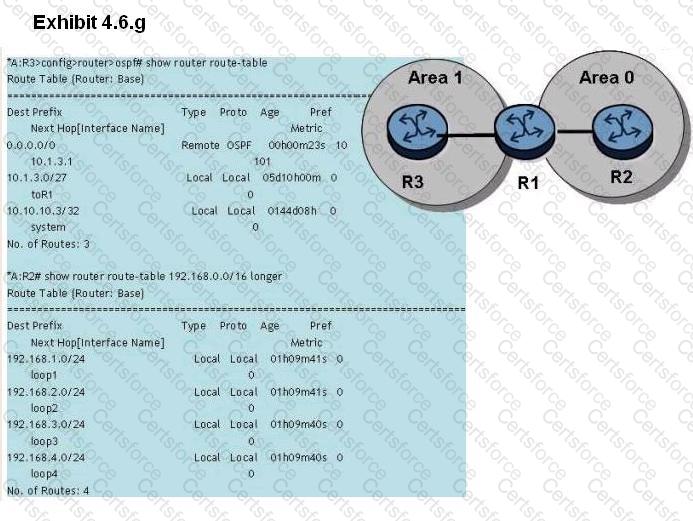What is the default Nokia 7750 SR TTL of a BGP advertisement between confederation members?
Which of the following is NOT a characteristic of MPLS?
What is the default priority value used for electing the DR on an Nokia 7750 SR running OSPF on an Ethernet?
Which of the following statements regarding area border routers in an OSPF network is true?
Click the exhibit button.

Given the topology and the show commands, and assuming that router R2 advertises all of its loopbacks into OSPF, what is the correct router R1 configuration?

An Nokia 7750 SR is configured with an export policy to redistribute its directly-connected networks into BGP. Which of the following databases contains the routes for these networks?
Which of the following about VPRNs is TRUE?
An OSPF adjacency is stuck in the exstart state. What is the most likely cause?
Which of the following about SAPs is TRUE?
Which of the following about VPN labels is FALSE?